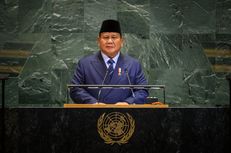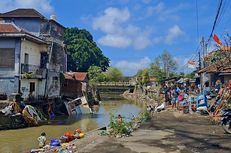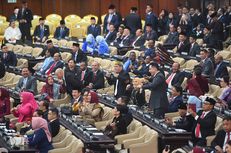Pension Fund: A Key Driver for Indonesia’s Vision 2045

JAKARTA, KOMPAS.com - Indonesia has committed to realizing the vision of transitioning towards a developed nation by 2045 when the country celebrates its centenary year of independence.
The Indonesian economy is estimated to be one of the top five largest economies in the world, entailing a nominal Gross Domestic Product (GDP) of more than $7 trillion, or a five- to six-fold increase.
While this agenda shows the determination of the country to achieve greater prosperity for the citizen at large, there are many obstacles to be anticipated. Among the hurdles will be the change in the demographic structure.
A study by the National Development Planning Agency (Bappenas) has forecasted that the number of non-productive populations will increase substantially, hence an increase in the dependency ratio to the level of 53.4 percent by 2045. The increase in the proportion of the aging population will propel demographic costs associated with providing basic needs for the elderly that the government should provide.
A study conducted by IFG Progress in 2021 found a positive correlation between the percentage of the elderly population in a country and the amount of public pension fund spending. Therefore, to facilitate the national vision of 2045, a measured economic policy is a prerequisite to strengthening the financial sector in banks and non-banks that play simultaneously as a source of financing to realize this dream.
Also read: Manpower Minister Ida Fauziyah Promises 5.6 Million Jobs for Indonesians
The financial sector plays a significant role in promoting development and sustainable economic growth. The progress shows that Indonesia’s financial sector is relatively underdeveloped compared to other major economies in the Group of Twenty (G20) forum.
In 2020, Indonesia’s total financial sector assets are still around 115 percent of its gross domestic product (GDP). This level is relatively low compared to other developing countries such as India (208 percent of GDP), Brazil (245 percent of GDP), and Malaysia (400 percent of GDP).
Moreover, there is a latent issue concerning the financial sector deepening that indicates imbalances between the contribution of banks and non-bank industries. In fact, during the last five years, the financial assets structure of Indonesia is still very much concentrated in the banking industry. Meanwhile, the Non-Bank Financial Institutions (NBFI), especially the pension fund industry, entail a low share of assets.
What is the critical role of the pension fund industry?
Pension funds play a fundamental role in various aspects of the financial sector. First, the accumulation of pension fund assets is expected to potentially promote both the depth and liquidity in the capital markets. The industry is also peculiar given the nature of asset accumulation and the length of liability. This gives pension funds flexibility to invest more in illiquid and long-term assets that yield higher returns and thus provide a long-term supply of funds to the capital markets.
This privilege is not always the case for other financial industries such as banks or insurances that have to play around with the matching between asset and liability management.
Qualitatively, the pension funds industry is also a strategic industry that can spur financial innovation, improvement in financial regulations and corporate governance, modernization in the infrastructure of securities markets, and an overall improvement in financial market efficiency and transparency. Such impacts should ultimately higher long-term economic growth, according to the study by Meng and Pfau in 2010.
Also read: Jokowi Signs Government Regulation on Indonesian Sovereign Wealth Fund
As an industry that provides a source of long-term financing, pension funds play important role as a potential source of funds for targeting sustainable national economic development. The larger the pension fund asset, the greater likelihood that an economy becomes less dependent on foreign funding especially on the portfolio investment which is more prone to capital flights and hence short-term fluctuations.
More Headlines
19 Javan Leopards and Black Panthers Captured on Camera in West Java
Indonesian Embassy Staff Shot Dead in Peru, Police Probe Contract Killing
President Prabowo Expresses Condolences After Driver Killed by Police Vehicle
Financial Report Reveals Billions in Losses for Indonesia’s High-Speed Rail
Indonesia’s Largest Private Bank Denies Allegations of Manipulation in 2003 Share Sale


































